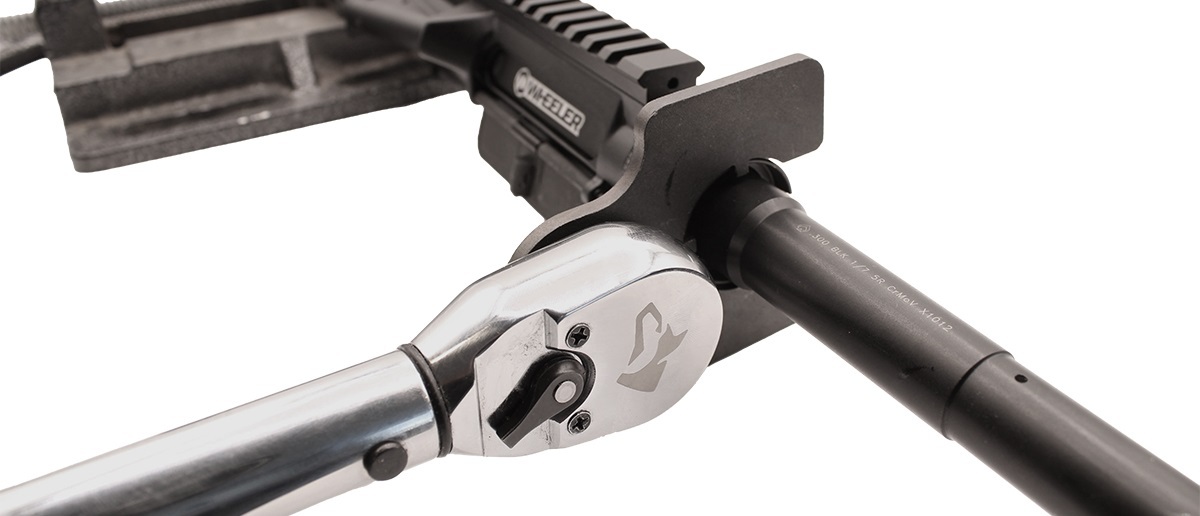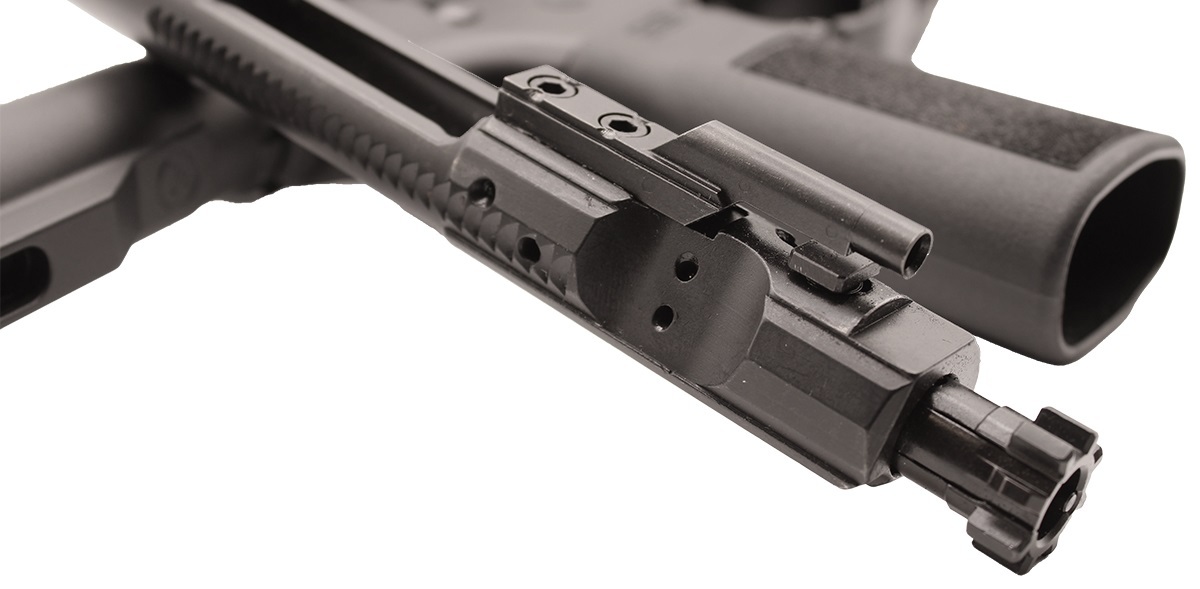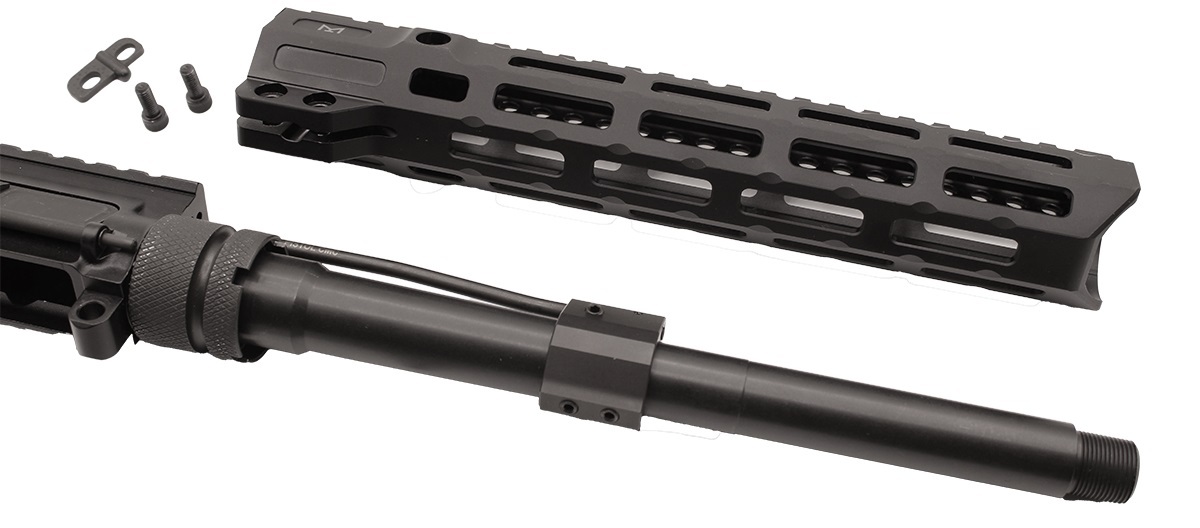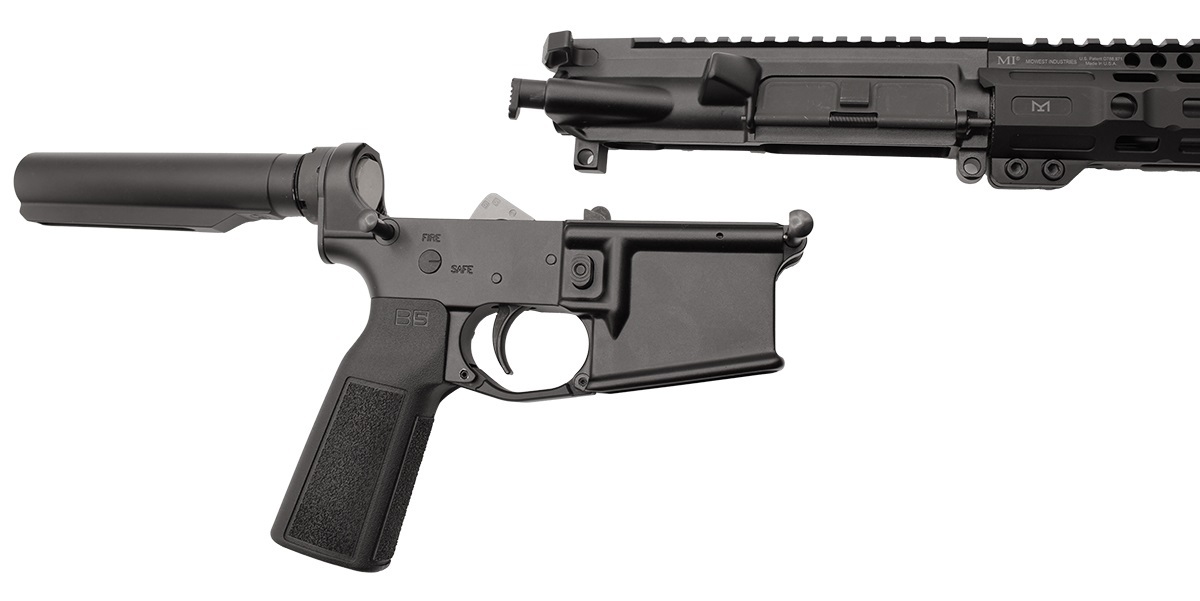Yes, Building Your AR-15 is Better Than Buying
Posted by 80-Lower.com on May 20th 2025
It's an argument as old as the internet: Should you build your AR-15, or just buy a rifle off the shelf of your local gun dealer?
Building vs. Buying Your AR: Which is Better?
We'll keep it simple. Building your AR-15 is objectively better, and for plenty of reasons. here's why.
Building Your Rifle is More Affordable

If you buy an AR-15 from any manufacturer or dealer, you will always pay a markup. A premium. A brand tax, if you will. The more "Gucci" the brand, the bigger the tax.
Even if you want a specific rifle model from a particular maker, simply buying the individual components separately and assembling that rifle on your own can save you as much as 30% off the retail price.
(The Tools to Build Are Cheap, Too)
"But you have to buy all the tools! You won't save any money!" That's the typical argument coming from those who argue you should just buy your rifle.
Those people are wrong.
The tools required to build an AR-15 are simple, and affordable -- so much so that, even if you need to buy every tool because you don't own any of 'em already, you'll still save money compared to buying a prebuilt gun from a dealer.
The only tools you need to build both an upper and lower receiver include:
- Punches and hammer ($10 to $15)
- Torque wrench ($30 to $50)
- Castle nut wrench ($10 to $25)
- receiver vise block ($10)
- Small tabletop vise ($40)
You can easily acquire all the tools you need by picking up something like the Wheeler AR Armorer's Kit for around $100. It includes everything but a vise, plus it includes some extra tools for making assembly of the lower receiver easier (like pin alignment tools, and a gas tube alignment rod).
Total investment with a vise? Around $150.
Considering the average markup on a firearm is between 10% and 35%, and that the average "mid-tier" AR-15 costs around $800 to $1,200, you could potentially save at least $200 to $300 by assembling your AR from scratch, even if you need to purchase every tool.
You Can Pick Equal (or Better) Parts For Less

When you buy a finished rifle off the shelf, you're almost always paying for parts you can get elsewhere, cheaper -- and, in many cases, those individual parts you buy yourself can offer the same quality, or even better quality, for a lower cost.
Take, for example, the infamous "enhanced bolt carrier group" that costs $300 to $400 from certain "top-tier" manufacturers. These BCGs do nothing different than your run-of-the-mill, mil-spec BCG. Sure, they may come with a shiny coating, and they might have some edgy machining that makes them look cool.
But these BCGs do not do anything meaningfully better than a quality, chrome-lined unit that costs half as much. Your rifle won't be any more reliable, nor more accurate. You're just spending $200 more than you need, because that company wants better margins.
The same holds true for most stripped upper and lower receivers. There just a handful of forging houses that makes all stripped receivers for the AR-15 market. Those unbranded, generic receivers then get shipped off to various AR-15 manufacturers -- who, quite often, proceed to stamp their roll mark on the receiver, apply the same, mil-spec anodized finish as ever other manufacturer, and then list their receiver for 100% or more over the cost, because their brand is recognized as being "top-tier."
In other words, you could pay $150 to $200 for the receiver found in a finished AR-15 from one company, when it is in fact the same receiver that's for sale as a standalone unit elsewhere for half the cost -- you're just getting a particular roll mark and paying a premium for it.
Building Means you Only Splurge on What Matters

Here's a controversial take that'll ruffle the feathers of AR-15 experts who overpay for their rifles: The only components that truly matter when it comes to building a quality, reliable, accurate AR-15 include the barrel, the BCG, and the fire controls. Everything else is, for the most part, fluff.
When you build your AR-15, you can budget for those important components. Spend extra on a high-quality barrel, a full-chrome BCG, and a precisely machined trigger and hammer. Then you can save money on the less important stuff, like the buffer tube and buffer, gas tube and block, and stripped receivers.
When you buy a rifle, you're paying for unnecessarily costly components that provide nothing in the way of reliability or accuracy: Fancy handguards, "enhanced" this-or-thats, accessories made from exotic materials, and shiny bits that might add to the aesthetics of the finished rifle, but do nothing to promote better performance.
The More You Build, The More You Save
The odds that you'll only ever own a single AR-15 are nearly zero. Virtually every tactical rifle owner winds up owning at least two or three guns. The more you invest in additional AR-15s, the more you'll save each time you build instead of buy. Every time to avoid dealer markups and brand taxes, you're saving a few hundred dollars.
And every time you build a rifle, you become more informed on which parts you should spend extra on, and which parts you can save money on without sacrificing performance or quality.
Want a New Gun? Building Lets You Modify Your Existing AR

You're going to want to modify and upgrade your AR-15 -- that's one of the biggest appeals of the platform. But if you simply buy a rifle off the shelf, you won't have the know-how, nor the tools, to modify it. You'll wind up spending money on those tools, and you'll learn how to disassemble your upper and lower so you can swap out old parts with new, better stuff. So, why not just invest in the tools and learn the knowledge from the start? Going down the build route reduces the cost of upgrading parts later, too, because you're more likely to buy the components you really desire in the first place. Buying a prebuilt AR and swapping parts out represents a sunk, and often unecessary, cost.
Plus, learning to build your AR means you can avoid buying entire rifles in the future. Want a different caliber, or configuration? Simply piece together a new, barreled upper assembly, and reuse your existing lower receiver. This is a common and cost-saving route many AR-15 owners take to enjoy multiple calibers while technically owning just one gun.
DISCLAIMER: If you are new to the world of DIY gun building, you likely have a lot of questions and rightfully so. It’s an area that has a lot of questions that, without the correct answers, could have some serious implications. At GunBuilders.com, we are by no means providing this content on our website to serve as legal advice or legal counsel. We encourage each and every builder to perform their own research around their respective State laws as well as educating themselves on the Federal laws. When performing your own research, please be sure that you are getting your information from a reliable source.

